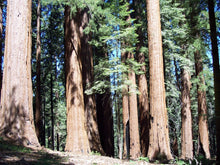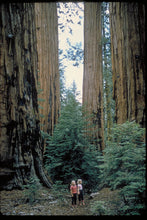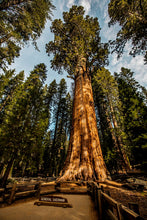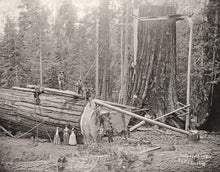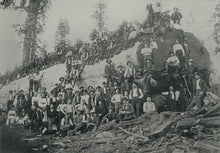Giant Sequoia
Regular price
$4.00
Sale
Sequoiadendron giganteum
Origin: California
Improvement status: Wild
Seeds per packet: ~20
BOTANICAL SAMPLE - NOT GERMINATION TESTED
Life cycle: Perennial
Giant sequoias are among the most charismatic and impressive trees on the planet. They are the largest trees in the world (by weight and volume), reaching upwards of 2000 tons. That's 4 million pounds! The tallest giant sequoias have reached over 300 feet in height, surpassed only by their cousin the Coast Redwood and a small handful of other species. Native to but a few counties in central California, they have proven quite adaptable far beyond their native range, though they are unlikely to achieve quite the same scale elsewhere. Wild trees can live upwards of 3,000 years.
In France, there is a giant sequoia tree planted around 1856 that has reached 190 feet. Outside Philadelphia, in what's now Tyler Arboretum, lives another giant sequoia planted in 1856 (by brothers Jacob and Minshall Painter, who established an arboretum with over 1000 varieties including Lebanon cedars that still thrive today). The Tyler tree is just 105 feet tall, which still likely makes it the tallest North American sequoia east of the Rockies — but it might have been even taller had it not had its top lopped off once for a Christmas tree (which may explain why the tree seems to split into two trunks halfway up). All that is to say: wherever you live in the US, as long as it's Zone 6-9, it's worth at least giving giant sequoias a try!
It seems odd to imagine any uses for a tree as spectacular as the giant sequoia beyond touching our souls and inspiring us, but of course humans have found a number of uses for them. While the lumber from giant sequoias is beautiful and very durable, it is also brittle and soft, meaning it is not terribly useful for construction (this is likely a major reason why the trees still exist). Fallen trees have long been used for fence posts, shingles and siding, because such uses don't require the wood to bear much weight, but its long-lasting durability is an advantage. The plant is even touted as a useful medicine, particularly in the form of extracts from its buds or fresh growth.
Our seed comes from the good folks at Sheffield's Seed Company in Locke, NY.
GROWING TIPS: Cold-moist stratify for 30 days, then soak in water for 24 hours. This is a fast-growing tree. It likes deep, rich soil, and a sunny but sheltered location is ideal. Good luck!
NOTE: Due to the time-consuming germination procedures required for this species, and in an effort to get you the freshest material possible, we are selling these seeds as botanical samples which have not been germination tested.






